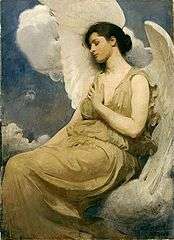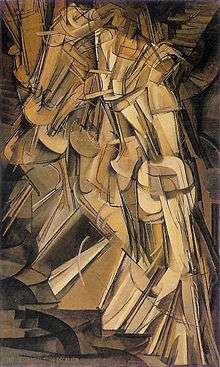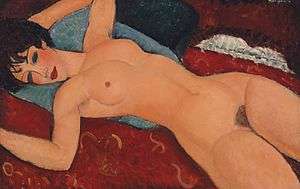Figure painting
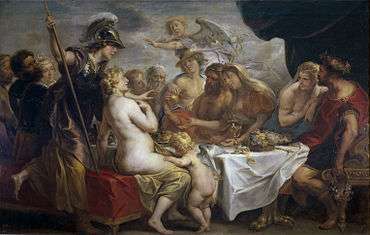
The Golden Apple of Discord at the wedding of
Peleus and
Thetis,
Jacob Jordaens, 1633,
181 cm × 288 cm (71 in × 113 in), oil on canvas
A figure painting is a work of fine art in any of the painting media with the primary subject being the human figure, whether clothed or nude.
Figure painting may also refer to the activity of creating such a work. The human figure has been one of the constant subjects of art since the first stone age cave paintings, and has been reinterpreted in various styles throughout history.
Unlike figure drawings which are usually nudes, figure paintings are often historical, mythological, allegorical or imaginary depictions that may have figures in appropriate costumes. A portrait painting is a figure painting that focuses on the creation of a likeness of a particular individual or group.
The nude has been a theme in Western art since classical antiquity[1] and again in the Renaissance, after being largely absent during the Middle Ages.[2]
Oil paint historically has been the ideal media for depicting the figure. By blending and layering paint, the surface can become more like skin. "Its slow drying time and various degrees of viscosity enable the artist to achieve rich and subtle blends of color and texture, which can suggest transformations from one human substance to another."[3] Although working from live models is preferred, the length of time needed to complete a painting has led most modern painters to use photographs as references at least part of the time if not for the entire work.
Figure painting is not synonymous with figurative art, which may depict real objects of any kind (including humans and animals).
History and styles
| Antiquity |
|---|
| Winged genius, fragment. Second-style mural painting, Roman artwork, late 1st century BC. |
|
| Mythological/Religious |
|---|
| Venus and the Lute Player (1565-1570) by Titian |
|
| Modern |
|---|
| Sitzender weiblicher Akt mit aufgestützen Ellbogen (1914) by Egon Schiele |
|
Notes
See also
References
Books
- Clark, Kenneth (1956). The Nude: A Study in Ideal Form. Princeton: Princeton University Press. ISBN 0-691-01788-3.
- Hughes,Robert (1997). Lucian Freud Paintings. Thames & Hudson. ISBN 0500275351.
- Rosenblum, Robert (2003). John Currin. Harry N. Abrams. ISBN 0810991888.
- Scala, Mark, ed. (2009). Paint Made Flesh. Vanderbilt University Press. ISBN 978-0826516220.
- Steiner, Wendy (2001). Venus in Exile: The Rejection of Beauty in Twentieth-century Art. The Free Press. ISBN 0-684-85781-2.
Web
External links
Contemporary artists
- Jenny Saville at Gagosian Gallery
- Jenny Saville at Saatchi Gallery
- Francis Bacon
- Lucien Freud
Museum exhibits
- Leopold Museum, Austria -Nude Men
- Museum of Fine Arts, Boston - Degas and the Nude

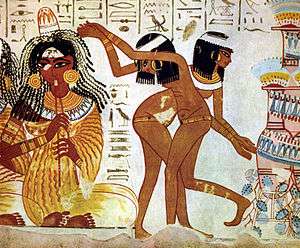
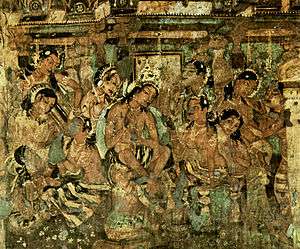
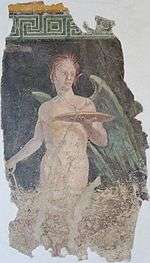
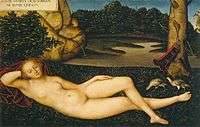
_2.jpg)






_-_The_Wave_(1896).jpg)
